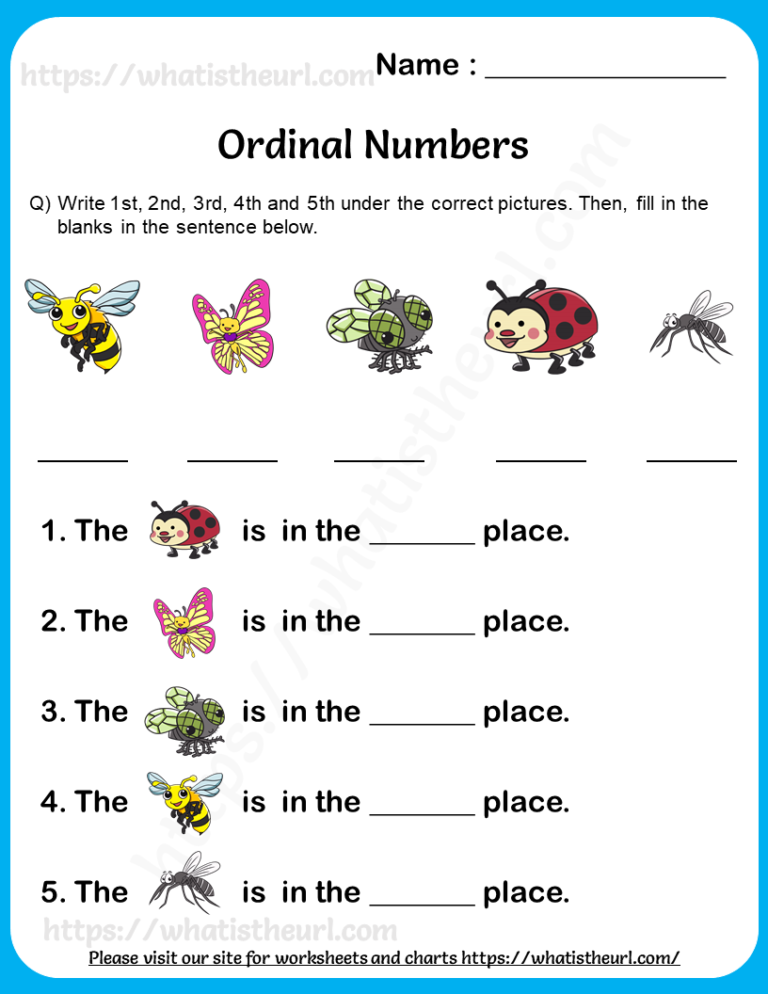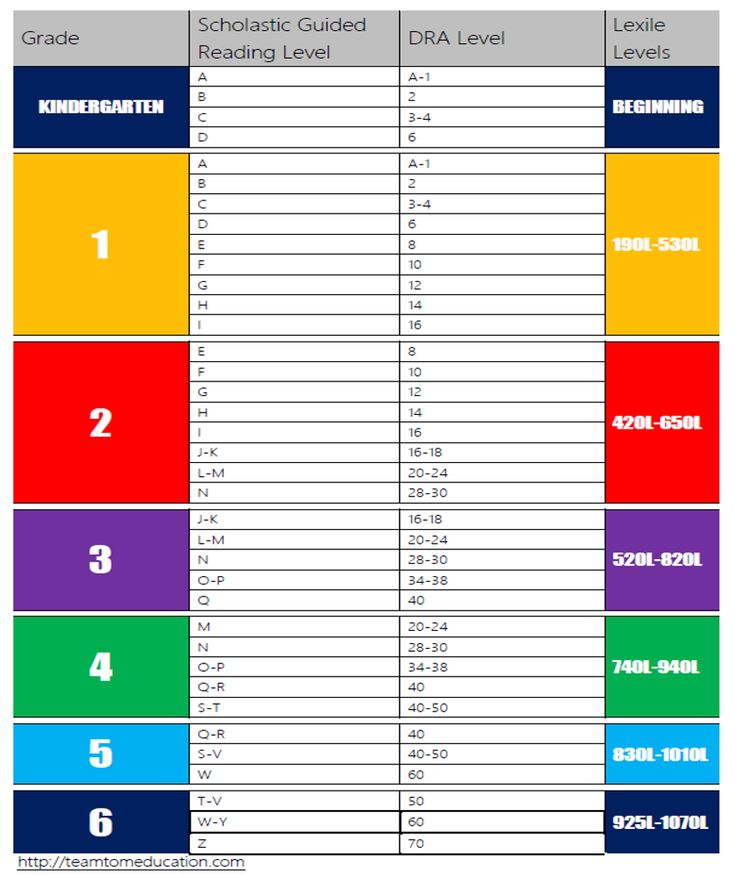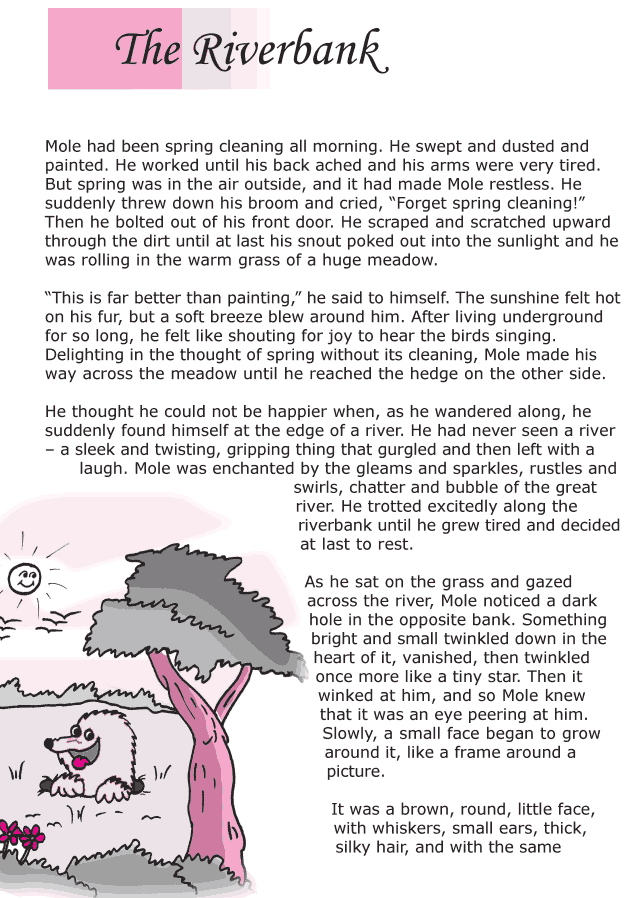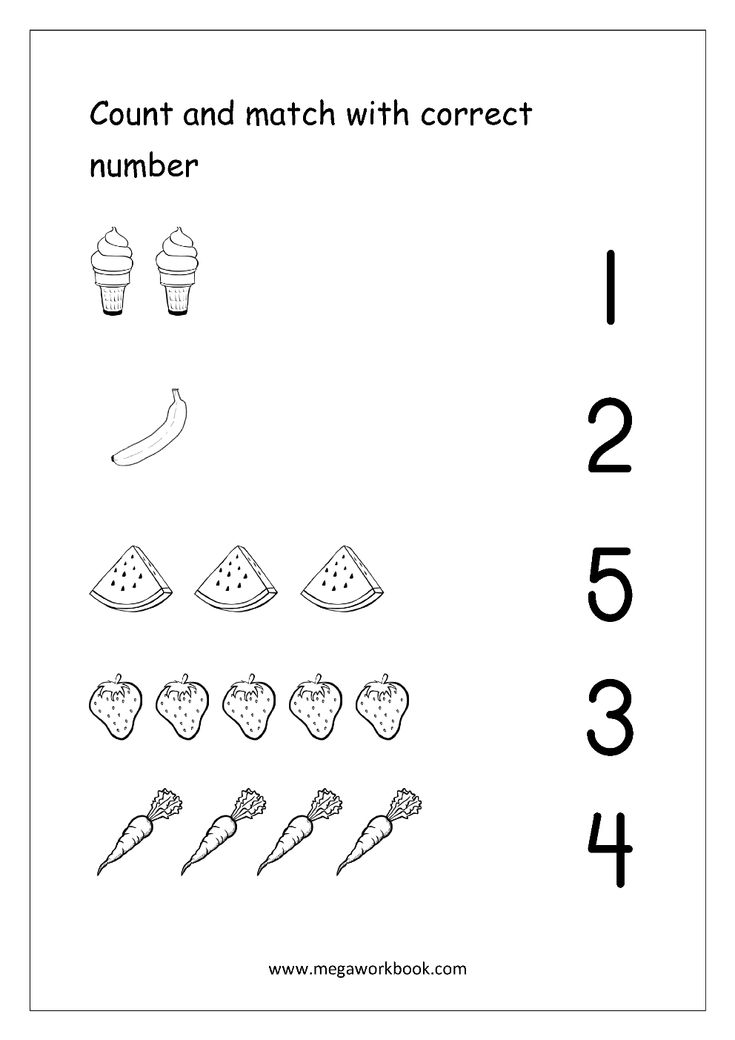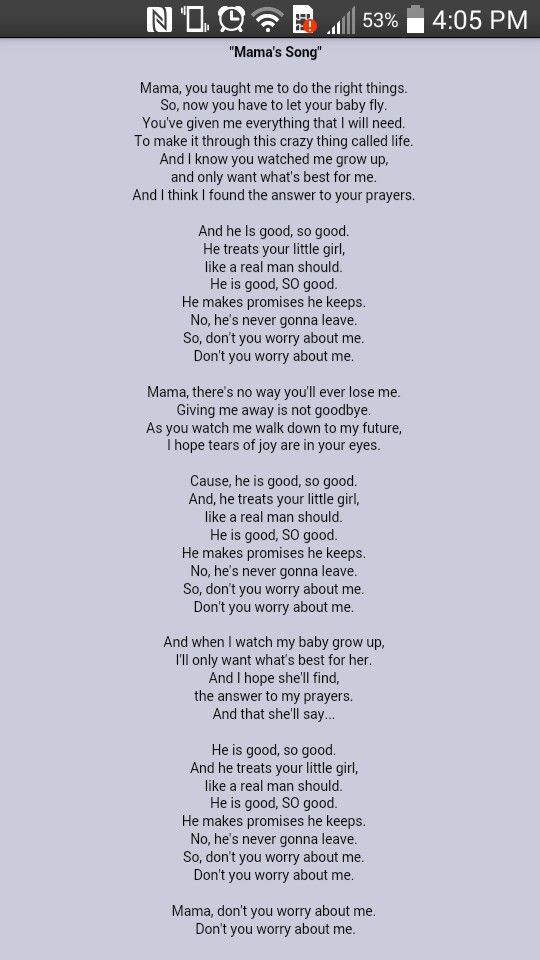Ordinal numbers in kindergarten
Definition And Activities For Kids
Learning mathematical skills is a vital part of early childhood development. And understanding ordinal numbers and how they work is part of building this competency.
Before we dive deeper into what ordinal numbers are and how you can assist your child with learning them, it’s important to know that we use them in our everyday lives.
This means your child has probably already come across this numerical concept, even though they may not know how to put it into words yet.
To help your young learner reach a stage where they fully comprehend and can use these numbers correctly, we’ve prepared five effective activities for you to try at home.
Let’s begin!
What Are Ordinal Numbers?
Ordinal numbers help us communicate the order of objects in a series. For example, first, second, third, and so on.
In theory, this sounds easy, but explaining it to children can be a little challenging. For instance, you can show a child the number “2,” and they may be able to understand what it means to have two of something (e. g., two eyes, two ears).
But when we talk about ordinal numbers, second (the ordinal number) is very different from two (the integer).
That’s because these numbers are not just about counting — they are more about things in relation to one another. And we have to look at a whole series or set for us to determine which object is first, second, third, etc.
The good news? Most children come across these types of numbers when watching a race or playing a game. They may be able to say:
Tommy came first.
Suzi was second.
Lorna was third.
Mike was last.
Children also spend a lot of time working with ordinal numbers in their early years at school because they connect with other critical mathematical concepts, such as sequencing and counting. So, helping your child understand them is part of a good foundation.
How Do You Write Them?
There are many different ways to write numbers, depending on what you are trying to show or solve.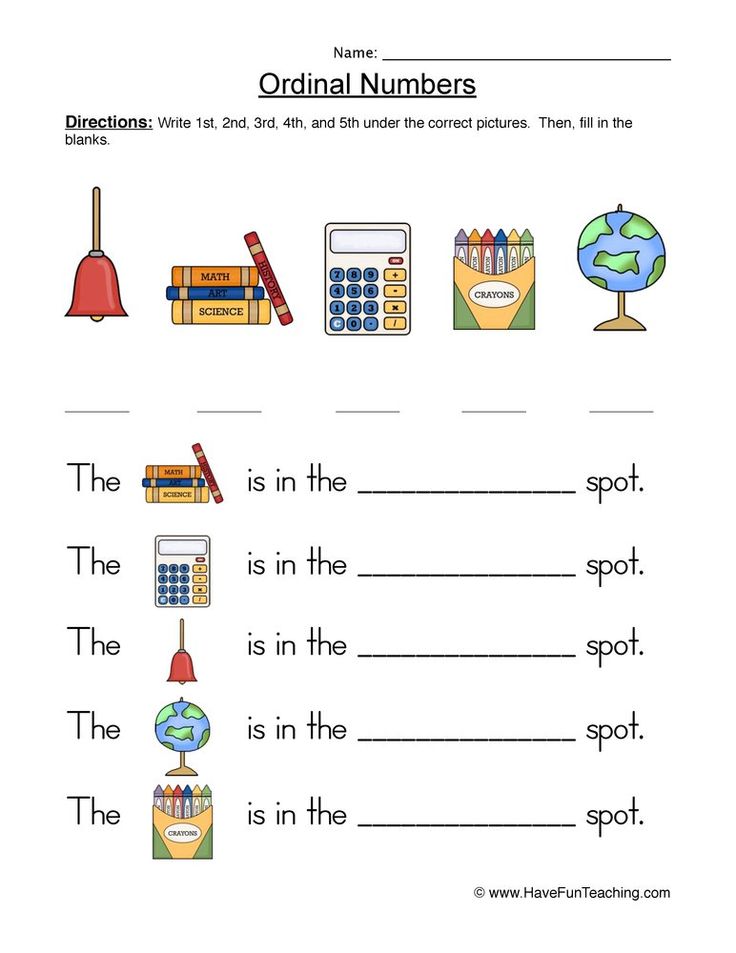 In the case of ordinal numbers, here are a few things to consider.
In the case of ordinal numbers, here are a few things to consider.
Let’s take a look at the first 10 ordinal numbers:
- First (1st)
- Second (2nd)
- Third (3rd)
- Fourth (4th)
- Fifth (5th)
- Sixth (6th)
- Seventh (7th)
- Eighth (8th)
- Ninth (9th)
- Tenth (10th)
From the above list, you can see that we write ordinal numbers by using the last two letters of the word. For example, fifth = 5th.
When looking at compound numbers, we apply the following:
- Numbers ending with 1: Only add “st” (e.g., twenty-first = 21st, thirty-first = 31st)
- Numbers ending with 2: Only add “nd” (e.g., twenty-second = 22nd, thirty-second = 32nd)
- Numbers ending with 3: o/Only add “rd” (e.g., twenty-third = 23rd, thirty-third = 33rd)
- Numbers ending with 4, 5, 6, 7, 8, 9, or 0: Only add “th” (e.g., twenty-fourth = 24th, thirty-fifth = 35th)
Some people add “ly” at the end of an ordinal number when it’s written out (e.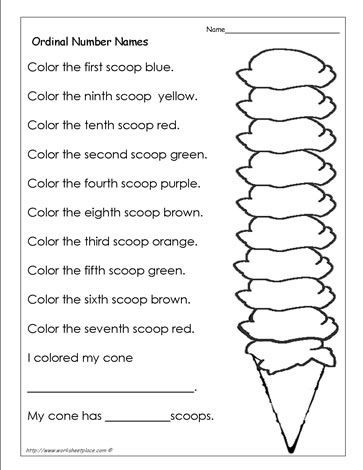 g., firstly, secondly, thirdly, etc.). However, when dealing with larger numbers (from 9th upwards), it’s best to avoid the “ly” altogether.
g., firstly, secondly, thirdly, etc.). However, when dealing with larger numbers (from 9th upwards), it’s best to avoid the “ly” altogether.
Ordinal Vs. Cardinal Numbers
We can’t look at ordinal numbers without also identifying what cardinal numbers are and how they relate.
In a nutshell, cardinal numbers tell us how many there are of something. For example, you have two ears. We also use these numbers for counting. Ordinal numbers, on the other hand, tell us the order of things in a set. For example, Timothy is second in the line.
Distinguishing between these two concepts can sometimes be tricky, especially for young learners. For instance, they might say, “The number three question was so easy,” instead of, “The third question was so easy.”
Activities are a great way to help our children identify the differences between these two concepts. With that in mind, here’s our list of five fun and effective games you can play with your child at home!
5 Activities To Learn Ordinal Numbers For Kids
1) Toy Lineup
What You’ll Need:
- Index cards
- Marker
- Any toys of your choice
What To Do:
The simplest way to introduce ordinal numbers to children is by placing some of their favorite toys in a line.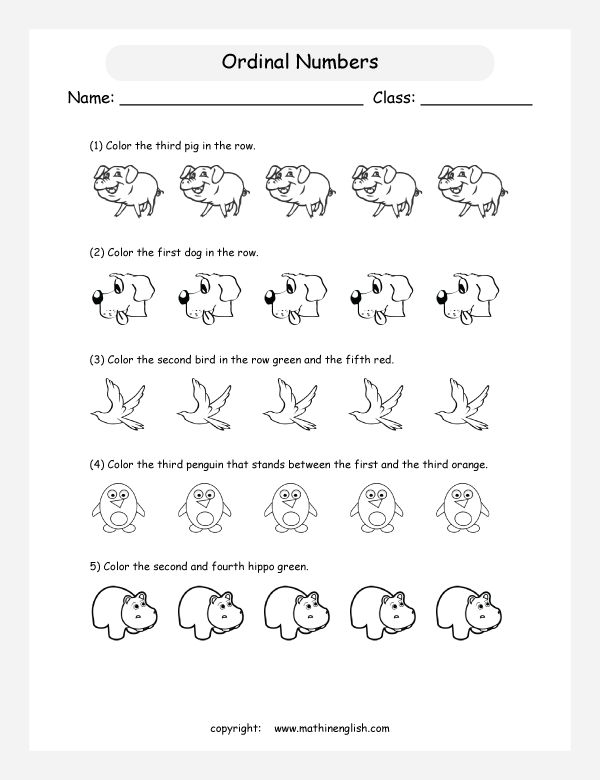
For this activity, you can use anything — dolls, toy cars, trains, legos — basically, anything you have an abundance of. After placing these items in a line, write ordinal numbers on your index cards (one number on each card).
To start playing, hand your child the index cards. Then, have them match the correct number card with each toy. For example, if they point at the fourth toy, they need to show you the card labeled “4th.”
You can start with just three to five items and, as they improve their skills, increase the line to 10 items or more.
This is a great way for children to get comfortable with what ordinal numbers look like in their numerical form.
2) Change The Lineup
What You’ll Need:
- Index cards
- Marker
- Any toy of your choice
What To Do:
As the name suggests, this activity is all about changing the positions of your lined-up objects. You can use the same toys you used in the previous game.
Start with changing the position of one object.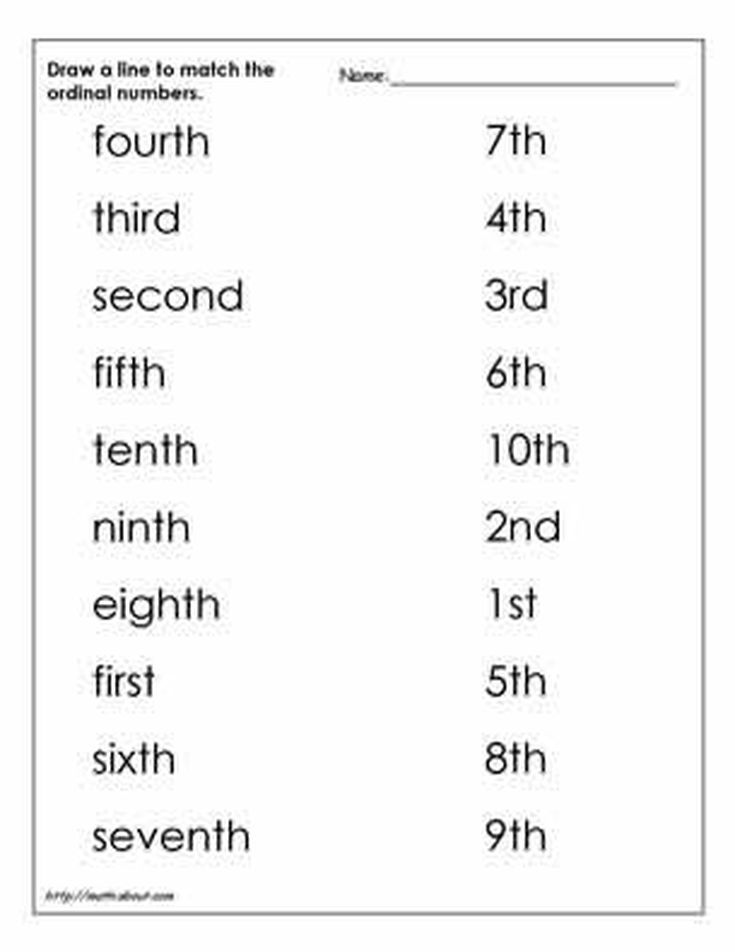 For example, move one item from the third to the last spot. Then, ask your child:
For example, move one item from the third to the last spot. Then, ask your child:
Which toy is third in line now?
Which toy is last in line now?
Continue moving just one object at a time, and encourage your child to re-evaluate their positions.
This game allows children to grasp that just one change is enough to influence the whole series. It also encourages them to think beyond memorization. As you switch things up, they’ll have to focus on which object is now the first, second, third, and so on.
3) Story Plot Map
What You’ll Need:
- A sheet of paper
- Marker
What To Do:
To begin, draw four boxes on your sheet of paper and label them with ordinal numbers (1st, 2nd, 3rd, and 4th). Next, tell a story in parts. For example, it might look something like this:
First, a girl named Emily wanted to get a cat.
Second, she went to a store and found the cutest little kitty.
Third, she asked her parents to get the cat.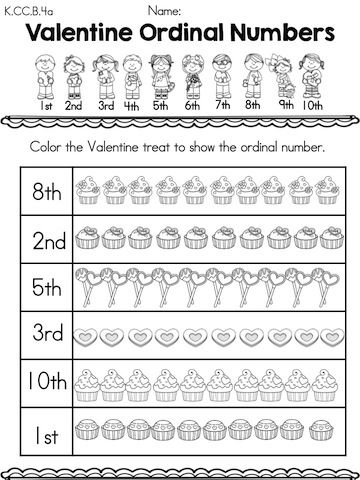
Fourth, they told her…
You can also write (or help your child write) what happens in each box as you tell the story. (So, “First, a girl named Emily wanted to get a cat” would go in the box labeled “1st”).
Point to each box as you tell that part of the story to give a visual representation of the events and emphasize the ordinal numbers (e.g., first, second, and so on).
Your story can take any direction you wish, and you can also encourage your child to give their input on what happens next.
One challenge with this game is ending the story on the last box. If there are four boxes, for example, then the fourth has to end it all. We recommend beginning by modeling all four boxes yourself first.
After that, your child thinks of box one, you get box two, they get box three, and you conclude the story for box four. After trying this a few times, let your child try the fourth box.
4) Color The Rainbow
What You’ll Need:
- White sheet of paper
- Pencil
- Crayons
What To Do:
Start by drawing eight lines in the shape of a rainbow on your sheet of paper. Then, hand the paper to your child. To play, have them listen to and follow directions as you tell them which stripe to color in.
Then, hand the paper to your child. To play, have them listen to and follow directions as you tell them which stripe to color in.
For example:
Color the third stripe green.
Color the fifth stripe orange.
Continue giving instructions until the rainbow has all of its seven colors.
Don’t be surprised if your child has to count each time they color in a stripe. This is all part of practicing and learning as they go, and this activity reinforces that ordinal numbers are about looking at the order of a whole set.
5) Wrong Order
What You’ll Need:
- Index cards
- Marker
What To Do:
Start by writing 1st-10th down on your index cards (one number on each card). Then, shuffle the cards and line them up in the wrong order. Very simply, the object of the game is for your child to place the cards in the correct order.
They might need a little help in the beginning, but as they get more comfortable, you can add a timer to keep things interesting: Let’s see if you can line these up in their correct order in under 30 seconds!
This is a great activity for children to practice identifying ordinal numbers in their numerical form (1st, 2nd, 3rd, etc. ).
).
Ordinal Numbers Are Not So Ordinary!
While we may use the concept and language of ordinal numbers every day, there’s nothing ordinary about them.
And as you can now see, helping children learn to correctly identify these numbers is crucial because they form part of other important concepts, such as sequencing. The above activities allow your child to work on and solidify their knowledge of ordinal numbers with you at home.
In addition, our Wacky Slide game from the HOMER Learn & Grow app is specially designed to help reinforce the fundamentals of understanding and working with ordinal numbers.
By using these activities — and with lots of time and practice — your young learner will be an ordinal number pro in no time!
Author
10 Free Ways to Teach This Skill
This post contains affiliate links. If you click & make a purchase, I receive a commission at no additional cost to you! Thanks! As an Amazon Associate, I earn from qualifying purchases.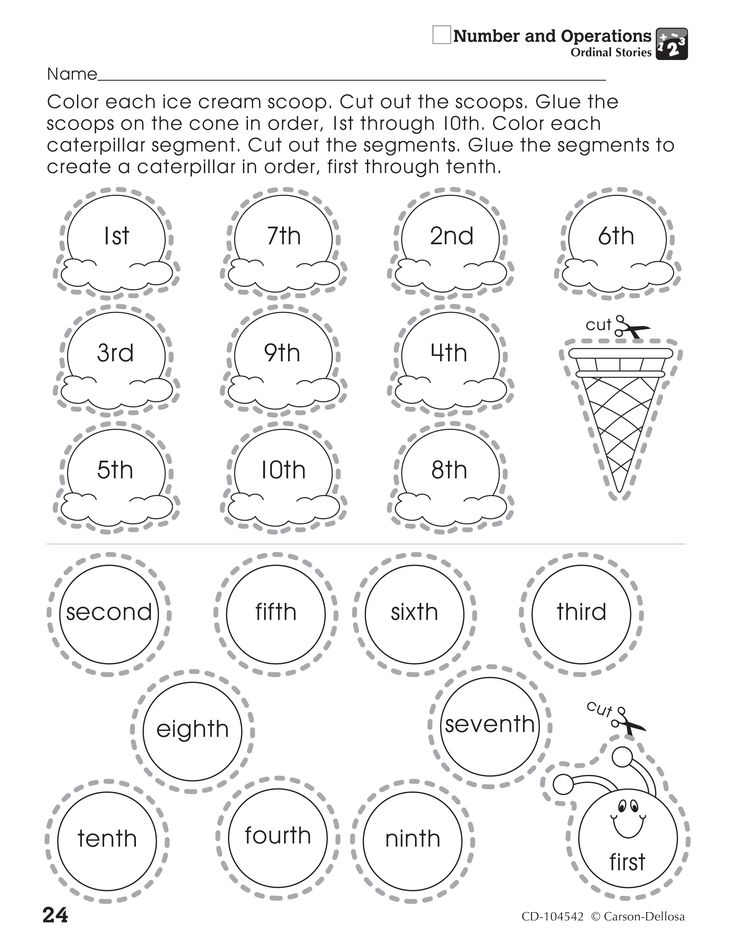 Read my full disclosure here.
Read my full disclosure here.
Ordinal numbers are a concept that we use every single day. So, obviously, we need to make sure that our kids understand what they are and what they mean. But, you may be thinking, “It’s been a few years since I was in school, and I can’t remember what the heck an ordinal number is!”
Well, don’t worry because I’m going to tell you what they are, and I’m going to share 10 ordinal numbers activities to help you teach this skill across all the different subjects!
What are Ordinal Numbers?
Ordinal numbers are simply “a thing’s position in a series.” (As in, first, second, third, so on and so forth.) That’s it!! Yet, understanding what they are in your mind and knowing how to explain ordinal numbers to kids are entirely different.
You can say, “one” and show a child one object. That’s pretty straightforward.
However, ordinal numbers are relational and a completely abstract concept to little kids.
What I mean is that the relationship between the positions of 2 different objects is the foundation of ordinal numbers.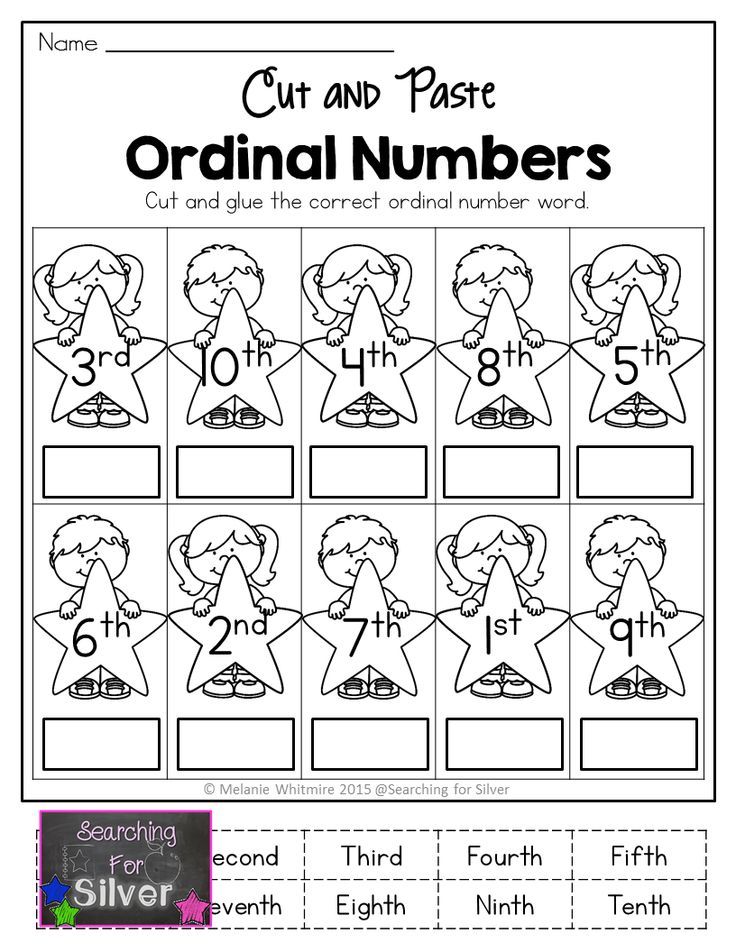 In other words, you have to have a second to have a first.
In other words, you have to have a second to have a first.
That’s why you need engaging activities and ordinal number exercises that provide a solid foundation! But, don’t think you have to learn all sorts of new information. It’s very likely that you’re already doing some and don’t even realize it.
So, let’s get to it!
Ordinal Numbers Activities
1. Line It Up
One of the first and easiest ordinal number activities for preschool is lining objects up in a row. My favorite thing about this activity is that you can use anything of which you have an abundance. (So, at our house, we would use LEGOs because we own about 10,000 LEGO bricks.)
You can use stuffed animals, cars, trains, or any other objects that interest your kiddos. Start out with 3-5 objects and my free printable ordinal number cards. Let your kiddos point to the object and match the correct number card. It’s that easy!!
As a classroom teacher, you can extend this lesson by having your students line up.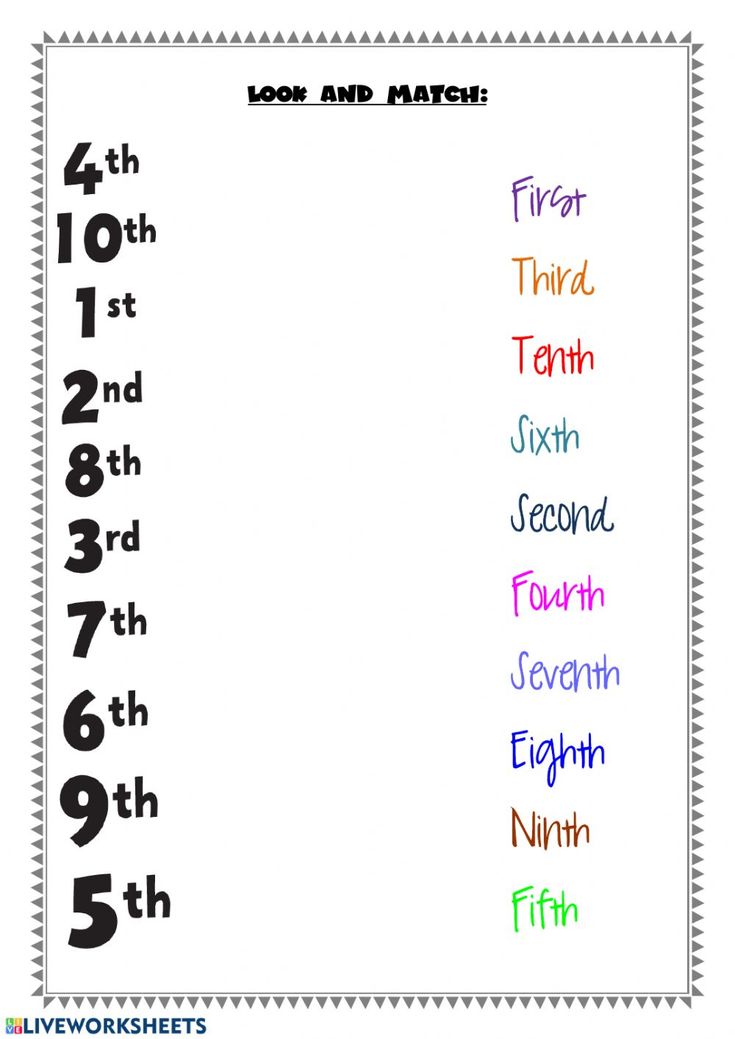 However, there is a trick to this. Make sure to take a picture of everyone in the line, and then show the image to the class. Otherwise, everyone will be stepping out of line to see the first person, Jimmy won’t be able to see around Susie, and pushing will ensue. Trust me, classroom management will be a nightmare.
However, there is a trick to this. Make sure to take a picture of everyone in the line, and then show the image to the class. Otherwise, everyone will be stepping out of line to see the first person, Jimmy won’t be able to see around Susie, and pushing will ensue. Trust me, classroom management will be a nightmare.
Print out several sets of the image and ordinal number cards. Then have your students work together to match the student and the position. (Joey is first. Cindy is second.)
2. Days of the Week
Another one of my favorite ordinal number activities is using the days of the week. If you do any sort of calendar time, you may already be teaching them without even knowing it! You probably say something along the lines of, “Sunday is the first day of the week. Monday is the second day of the week.”
If not, just start doing this daily. You’ll be amazed at how the consistent practice helps. If you want visuals to go along with the sentences, I have a free “Days of the Week” printable you can use with your ordinal number cards.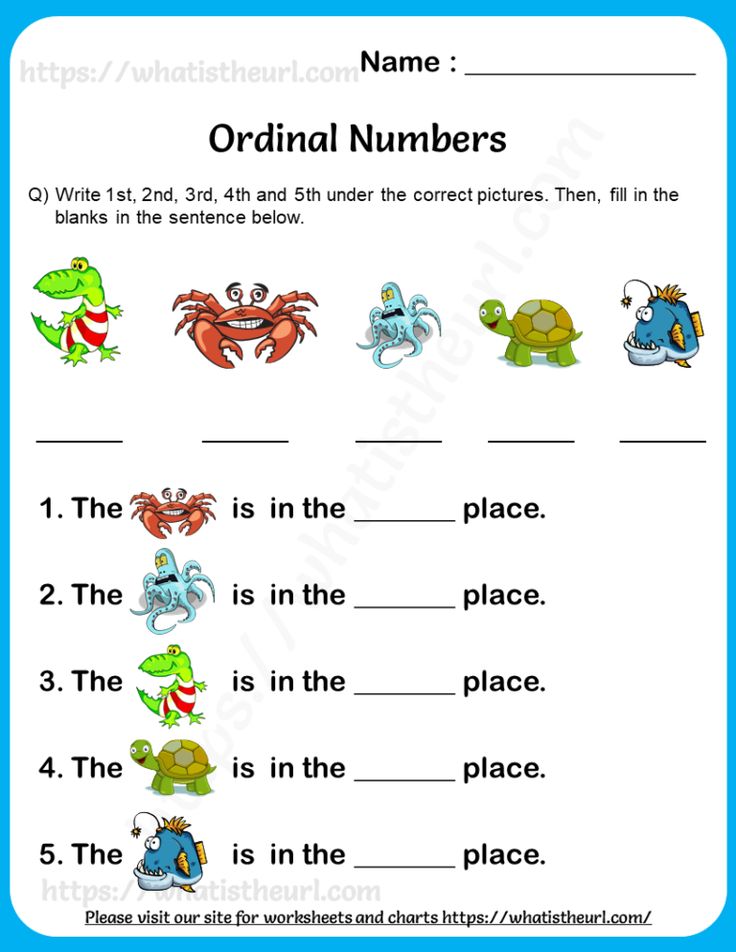
See how easy this is? You can do it!
3. Months of the Year
This is another quick way to practice ordinal numbers on a day-to-day basis. When you are discussing the current month, use my free printable months of the year pages to show the position of each month.
Just print out the months and point to the current month. Let’s say we are in the month of March, point to March and say, “This is March. It is the third month of the year.” Then you can write 3rd beside March. Continue this same cycle of sentences and discussion until you have talked about every month and practiced the concepts of first through twelfth.
4. Sequencing
Remember, teaching ordinal numbers doesn’t have to be super-complex. By simply talking about consistent, sequential daily activities, you are teaching ordinal numbers. Think about it like this. What are the events that kids do every day? First, wake up. Second, put on your clothes. Third, put your pajamas away. Fourth, eat breakfast.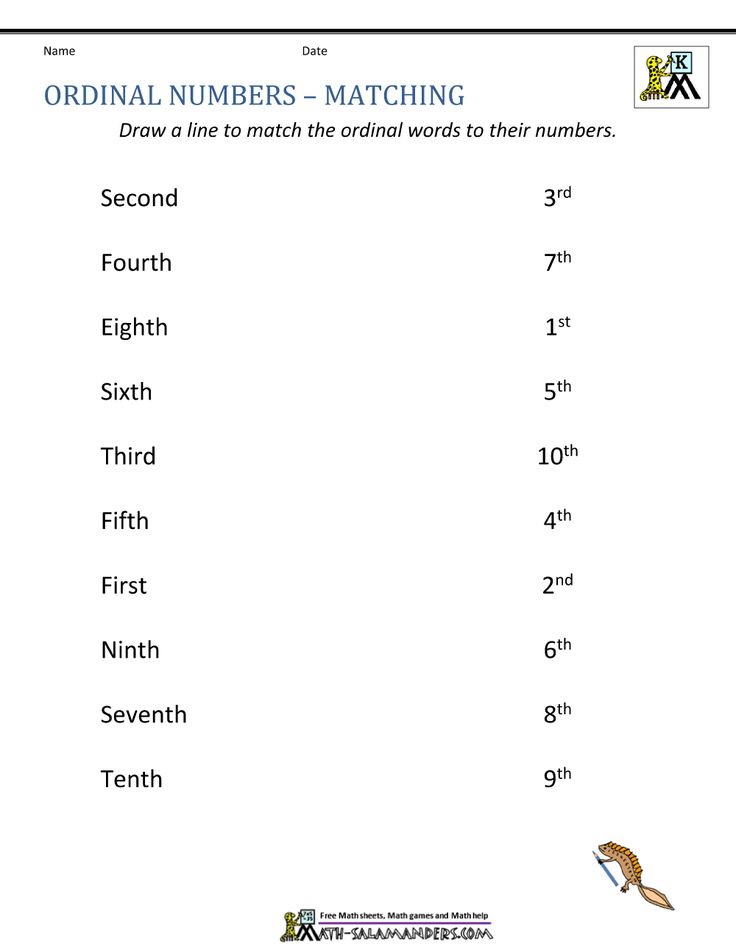
See? You don’t need an expensive set of sequencing cards. You can either draw pictures or let your child draw them. Just have your kids put the pictures in order and match the ordinal number cards to them! Easy peasy.
5. Following Recipes
Following recipes is another one of my favorite ordinal number activities. Obviously, you need to use your judgment on the intricacy of the recipe, but for young children let them make something like pudding.
Go ahead and have all of the tools out for them. Then allow them to complete the steps as independently as they can. For those just learning the concept of ordinal numbers, let them complete 3 steps. “First, pour in the pudding mix. Second, pour in 2 cups of milk. Third, stir it all together.”
For older kids, let them give you a running commentary on every step. “First I get out my bowl. Second, I get out the pudding mix and milk. Third, I pour the pudding mix into the bowl.”
To extend this activity, you can allow them to video themselves and then write the sequence into their own written recipe. Think about what a fun family activity this would be! Your kids could make an entire cookbook and then give them to family members as Christmas gifts.
Think about what a fun family activity this would be! Your kids could make an entire cookbook and then give them to family members as Christmas gifts.
By the way, I recently found a recipe that I had written when I was in second grade, and it should have been a foreshadowing to my future issues with cooking. I was able to explain (in detail) how to cook “spasketty” in 3 steps. It was hilarious! Obviously, my understanding of cooking and ordinal numbers wasn’t really vast.
6. ABC Order
This is a great way to combine reading and math! You can either make your own alphabet flashcards with index cards and a sharpie or get a pack of simple alphabet flashcards. Then let your littles match the first 12 letters of the alphabet with the appropriate ordinal number. You can mix them up to make it more challenging for your more advanced learners.
To add another level of difficulty, have your kids write their spelling words or vocabulary words and cut them out. Then have them mix the words up and put the words into alphabetical order while matching the correct ordinal number.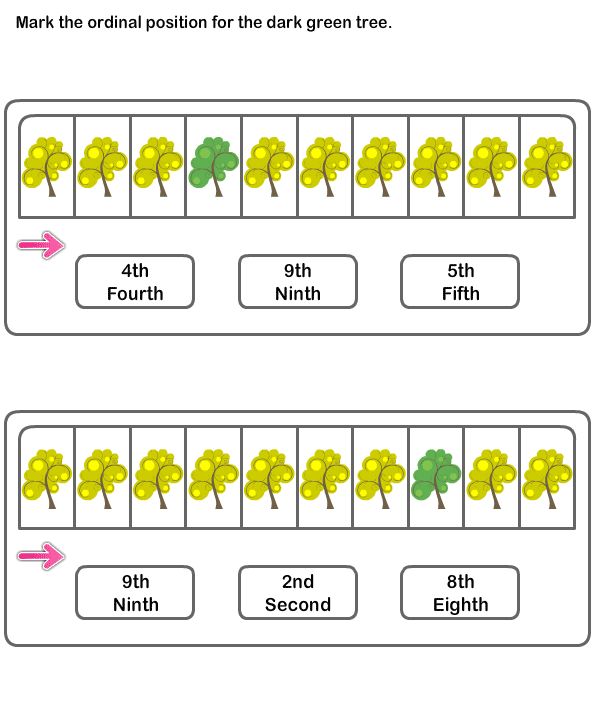 This is another one of my favorite ordinal number activities!
This is another one of my favorite ordinal number activities!
7. Sports
If you have a child that loves sports, then get them thinking about how each sport makes use of ordinal numbers. Here are two examples…
- Football-1st, 2nd, 3rd, 4th downs: 1st-4th quarters: rankings of the favored teams in the NFL
- Baseball-1st, 2nd, 3rd base: 1st-8th innings: rankings of the favored MLB teams
This is extremely useful when you get the dreaded “When am I ever going to use this skill in real life?” Well, now they know!!
8. Competition
Because I’ve taught boys, and am raising two boys of my own, I am keenly aware of how much they love competition. They can make a competition out of literally ANYTHING.
So, take advantage of this and let them compete in any category they want. Then have them give out the prizes to the appropriate winner. (Depending on how many participants, you may be able to give out all 12 of the ordinal number tags.)
Any time you can make learning into a game, you have a winning combination.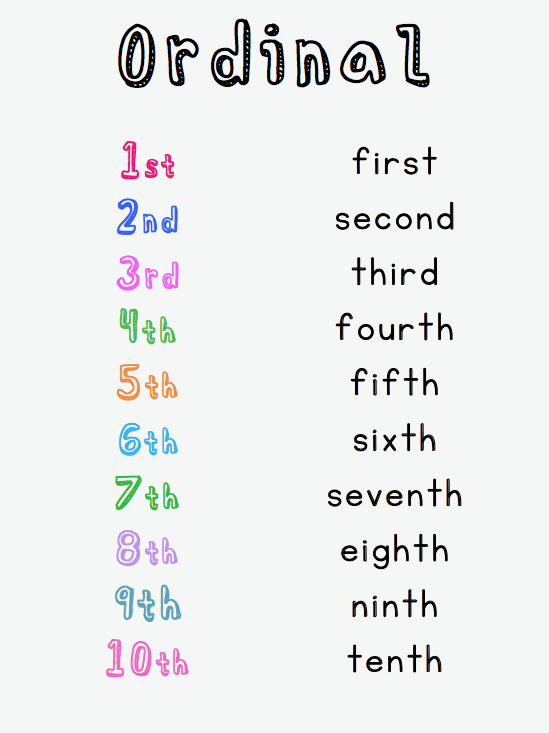
9. Order of Events
If you have older kids, they will be required to understand and create timelines. So, this is the perfect opportunity to incorporate math into history!
There is a distinct relationship between historical events and ordinal numbers, and this is a great time to get kids thinking about that fact. Have them write out several significant events from history, mix them up, and then ask them to put the events into order.
To challenge your kiddos even more, ask them to explain the cause and effect relationship between the events. This gets them thinking more deeply about “why” the events happened in that specific order.
10. Paragraph Structure
We all know the importance of good writing, but sometimes we don’t really know what that looks like at different levels. Honestly, it can be pretty tricky, but one thing that is necessary to good writing is the use of ordinal numbers! (I bet you knew I was going to say that.)
Think of it like this, if you want your kids to be able to have a coherent piece of writing, they need to include a sequence of events or a distinct order to their paragraphs.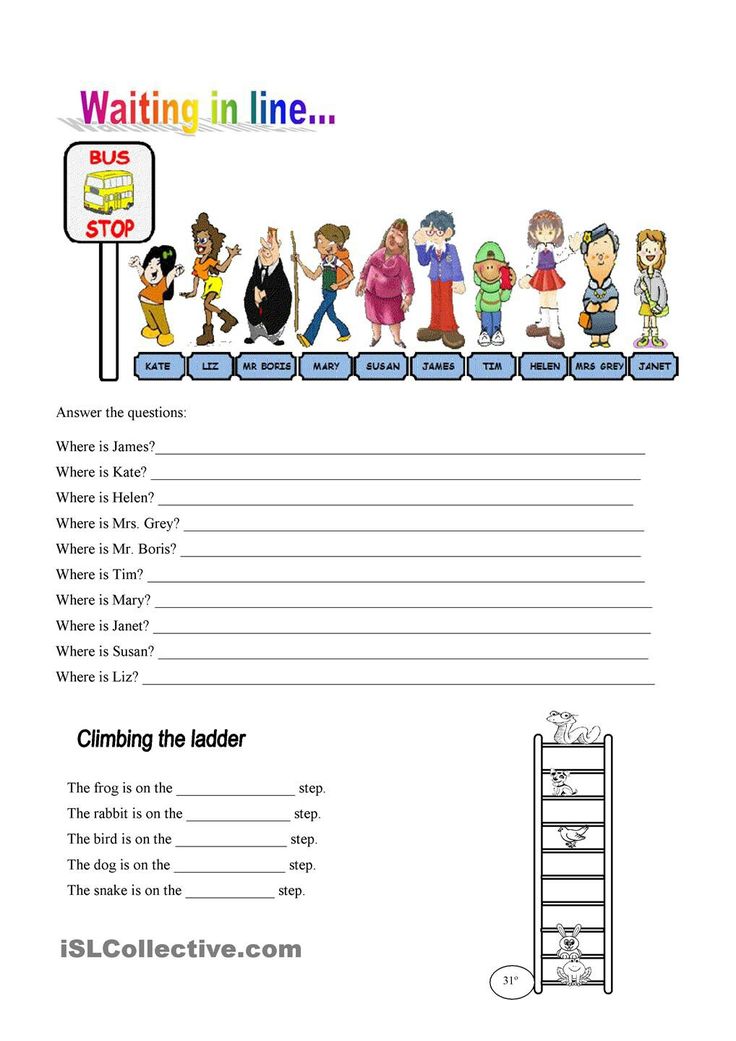 So, you teach them how to write sentences and put those sentences into order. “First, the man gave the dog a bone. Second, the dog dug a hole to hide the bone.”
So, you teach them how to write sentences and put those sentences into order. “First, the man gave the dog a bone. Second, the dog dug a hole to hide the bone.”
Then when they’ve mastered that skill, you apply this same technique to creating paragraphs and essays!
So, there you have it!
Ten activities for teaching ordinal numbers in all content areas, and all of them are completely FREE!! Was it easier than you thought it was going to be? Do you think you can use some of these simple ideas?
Acquisition in preschool educational institution. How does this happen?. Kindergartens in Penza
It all starts with the fact that parents come to the kindergarten to apply for the admission of their child. When enrolled, the superintendent asks parents what year they would like to start kindergarten (usually the year the child turns 2 or so). The data is entered into the web-education system (electronic kindergarten) and indicated in the application, which is filled out by the parents along with other form documents.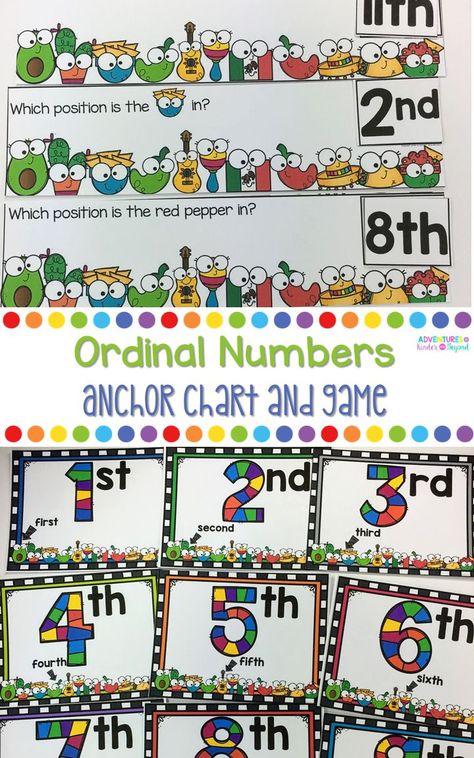
While parents are waiting for their turn, they can see their serial number in the queue lists on the kindergarten website or in the EDS system (if they have an ID number).
From spring to September, dense work is carried out to staff the groups. Recruitment into groups is carried out according to a simple rule: how many children have graduated from kindergarten, the same number of new ones should come. Kindergarten must keep a stable figure.
First of all, children from the main queue and beneficiaries are taken. If there are not enough children, then they get from the additional queue. What is the difference between the main queue and the additional one, see the "Electronic queue" section. Recruitment continues throughout the year subject to availability in the kindergarten.
During recruitment, the kindergarten calls parents whose children are on the waiting list. Learn the relevance of the parents' intention to visit their kindergarten.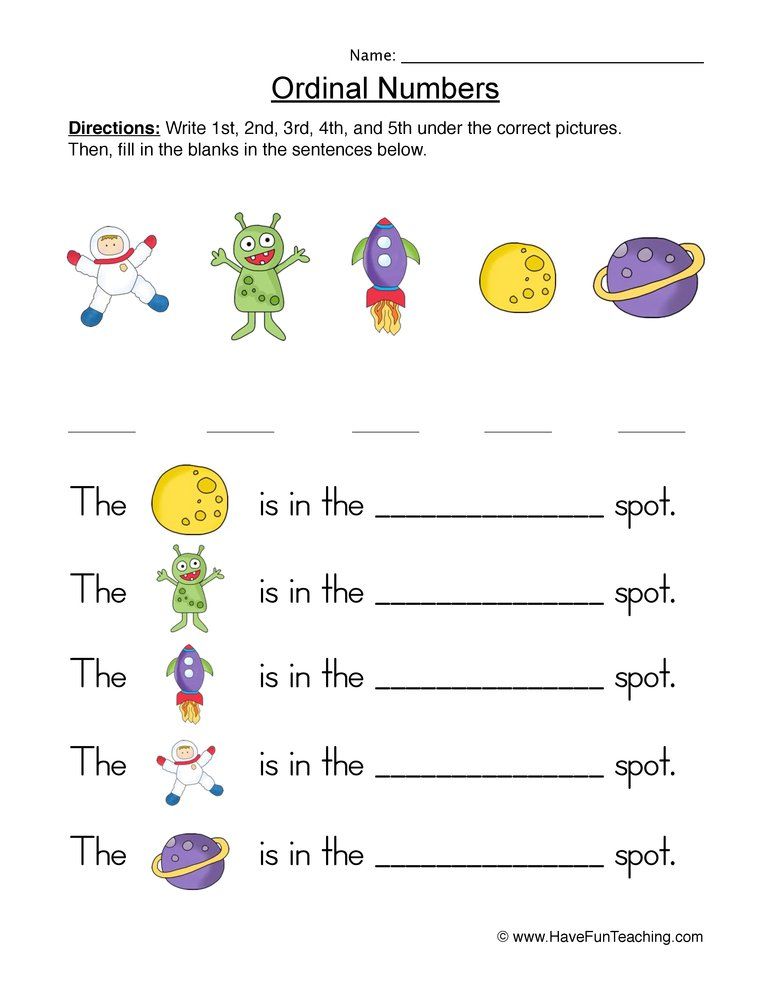 Some parents refuse, for example, due to the choice of another kindergarten.
Some parents refuse, for example, due to the choice of another kindergarten.
Attention, conflict situation!
Dear parents! If the kindergarten staff does not get through to you, they can come to the address you provided and find out personally if you intend to attend this kindergarten. But this does not always happen, since kindergarten employees often do not have the opportunity to personally visit their parents. Please don't bring this on! In the event of an unsuccessful attempt to contact you by phone or other means of communication, the kindergarten staff may, without visiting you at the address you specified, simply strike you out of the queue due to the incorrect contact information you left. There have been cases where parents lost their phone or changed their phone number and moved to a new address, while still hoping for their number in the kindergarten queue. Then, having learned about the expulsion from the queue, they made an unnecessary and senseless scandal, despite the fact that they themselves were to blame for what had happened.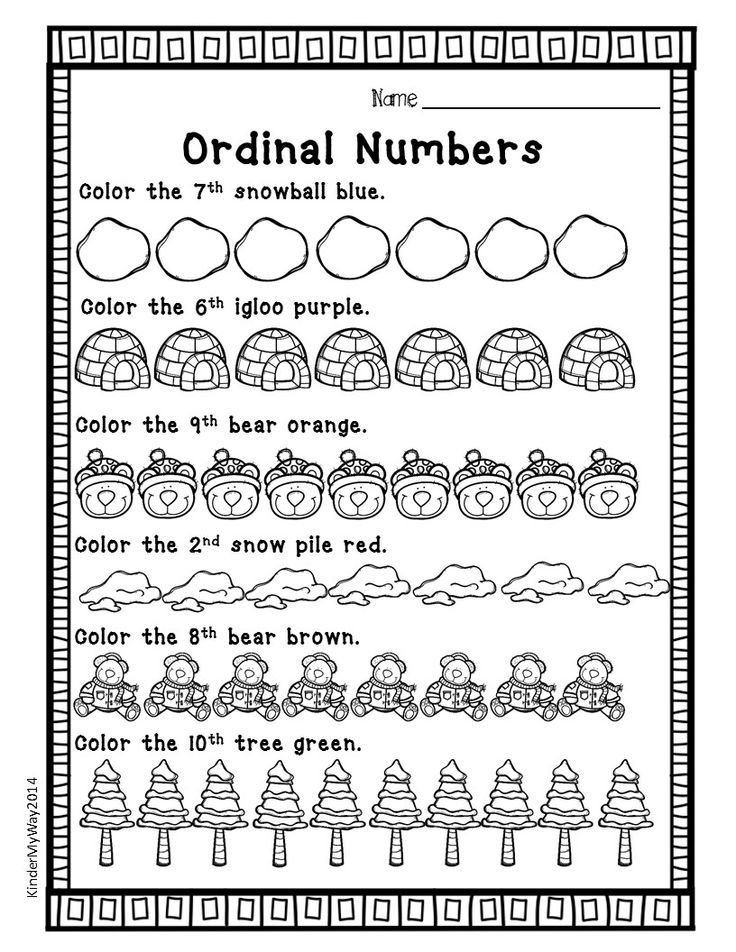
If you change your phone number or address, be sure to inform the kindergarten staff! Call more often, find out about the status of your sequence number in the queue, especially during the picking process.
After the kindergarten staff calls all the necessary waiting lists, they set the date and time for the general meeting of the parents of future pupils. At the meeting, organizational issues are resolved, an agreement is signed, a referral to the medical commission is issued, etc.
Ordinal and quantitative counting for preschoolers
11/24/2020
To teach a child to count even before he becomes a first grader? Easily! To do this, you need to awaken in a preschooler an interest in mathematics and simple calculations. Of course, the game will help in this! Playfully, you can learn not only to count, but also to distinguish a quantitative account from an ordinal one. Forgot what it is and what is the difference? We invite you to refresh your knowledge.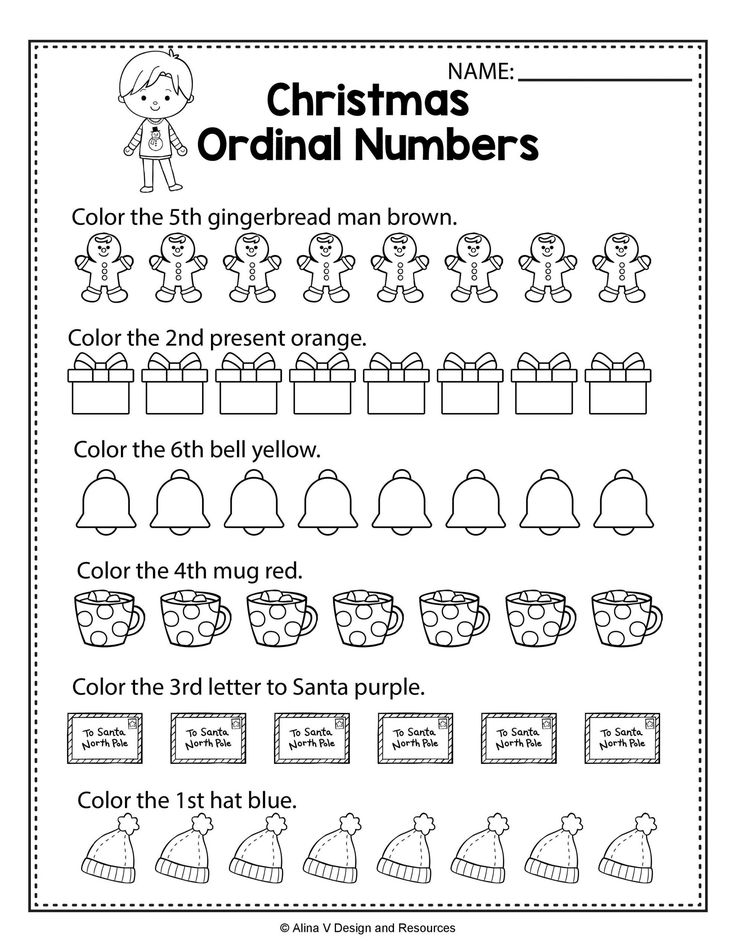
Mathematical counting is an action for counting something. The school teaches ordinal and quantitative counting. Let's talk about them.
Contents:
- What is quantitative account
- What is an ordinal account
- Ordinal and quantitative accounts - 5 differences
- Targets
- Numerals
- Questions and answers
- Direction
- Meaning
- Reinforcement games
- "On the clouds" with an ordinal score of
- Number and Ordinal Counting Game - Rainbow Arc
- Game - Luntik's birthday
- Helpful Hints
What is a quantitative account
A quantitative account implies the answer to the question: "How much?".
As soon as the child remembers the question, he will understand what is required of him. Of course, information is best absorbed in the form of gaming exercises.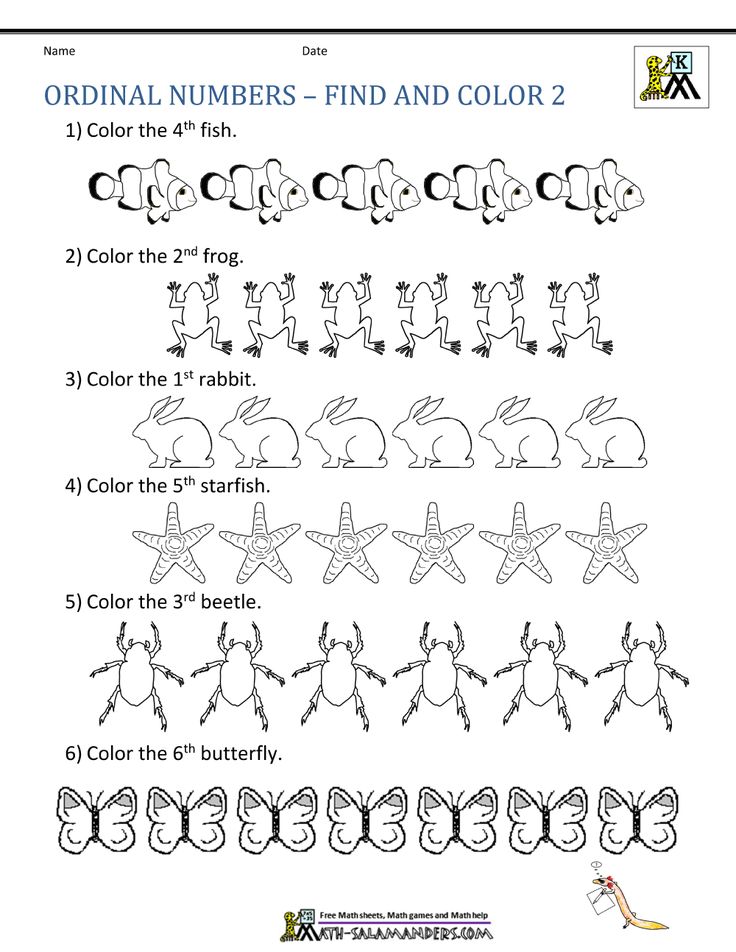
Example: Place objects in front of your baby. Ask him a question, give him the opportunity to count and answer.
The game can be gradually made more difficult. For example, adding or removing some of the items, grouping according to characteristics, etc.
What is an ordinal score
An ordinal score is associated with the question: "What is the score?".
It's simple. Again, the game and objects, preferably something different from each other, for example, felt-tip pens. Ordinal from the words "order, in order", this will help the child remember the main question. Ask him to determine the serial number of any of the items.
To complicate the game tasks, swap items, take away or add new ones, inviting the child to explain how and why the serial number changes.
Ordinal and quantitative accounts - 5 differences
Only the account is common between them.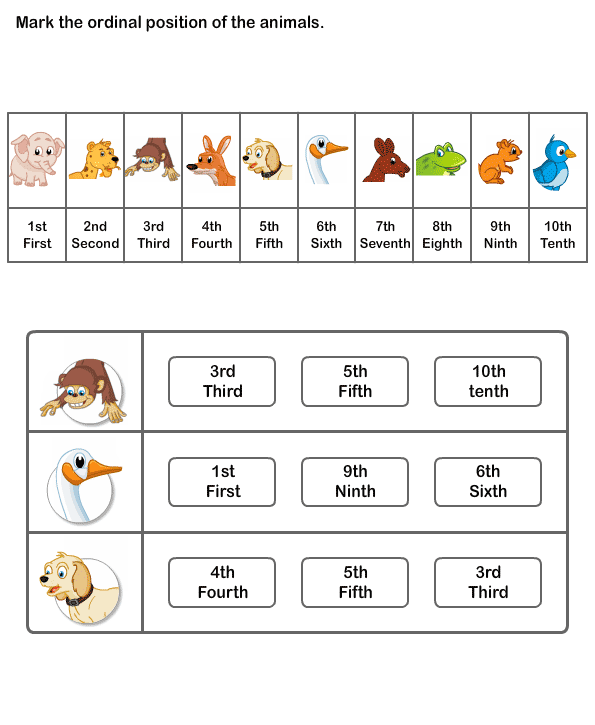 You have to count to get the answer to the question in the end. Everything else is different:
You have to count to get the answer to the question in the end. Everything else is different:
- targets;
- numerals;
- questions;
- direction;
- value.
Difficult at first glance. For a preschooler, it may even be incomprehensible, but if you play a little, everything will become clear!
Goals
A quantitative account is used to count something. The end goal is to determine the total number. An ordinal count is needed to determine the number of an item in an ordered set.
A simple example. Arrange the fruits in a row: apple, pear, tangerine, orange and pomegranate. A quantitative account will help us calculate how many fruits are on the table - 5.
Ordinal is needed to determine the ordinal number of each fruit in the row. The apple is the first, the pear is the second, the tangerine is the third, the orange is the fourth and the pomegranate is the fifth. The same can be done from right to left, the serial numbers of fruits in this case will change.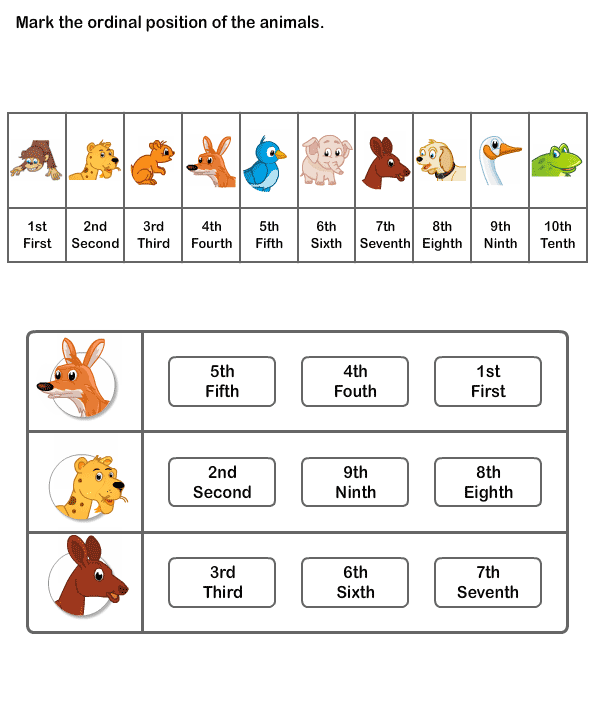
Numerals
Ordinal counting is impossible without ordinal numbers (indicate the order of an object in a series of sequences), and quantitative counting is impossible without quantitative ones (indicate the quantity).
For example, one, two, three are quantitative, the first, second, third are ordinal numerators.
Questions and Answers
It is easiest for children to remember how the ordinal count differs from the numeral count by asking questions. "How?" - numeral, "what, what number?" - ordinal.
This example game can be played all day long until the child memorizes the information. Ask questions about everything around him. For example:
How many legs does a stool have?
How many fingers are on the hand?
How many rooms are there in the apartment?
or
What floor are we on?
What candy do you eat?
Direction
To count how many items in total, it does not matter how to do it from right to left or vice versa.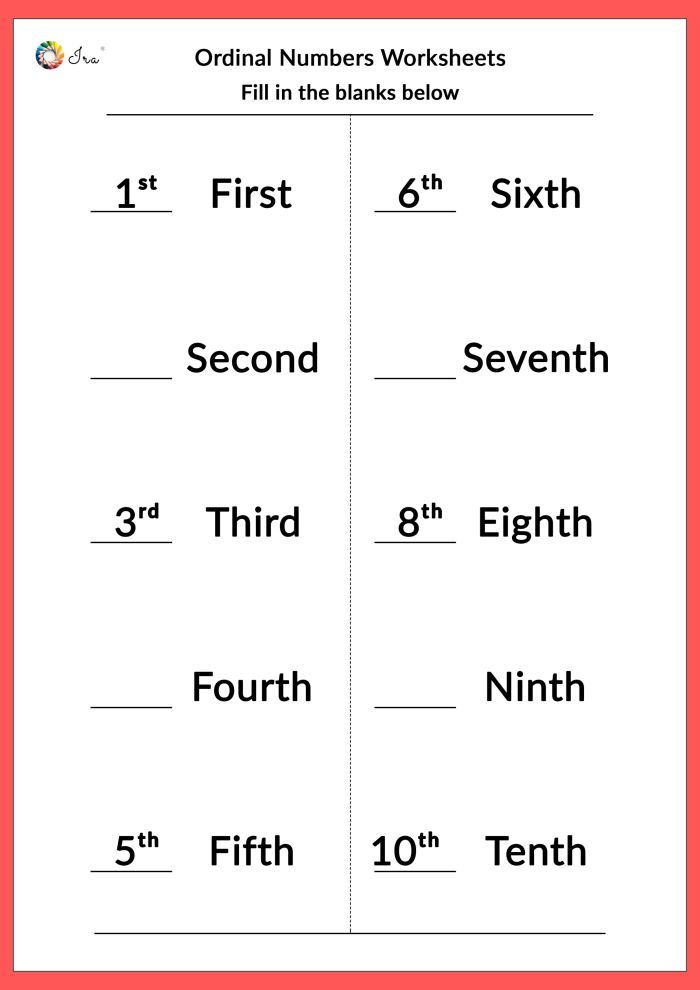 The goal is to determine the total. You can find out the number of an item in a set only after specifying the direction. Ordinal numbers change depending on whether you count from right to left or vice versa.
The goal is to determine the total. You can find out the number of an item in a set only after specifying the direction. Ordinal numbers change depending on whether you count from right to left or vice versa.
Example:
Can you show the third bird from the right?
What color is the second house on the left?
These are tasks for determining the sequence number with direction. Explain to the child that the total number of objects does not change when the direction changes.
Meaning
Quantitative count indicates the totality of items, and ordinal helps to determine the place of each.
Games for reinforcing the material
"On the clouds" with an ordinal score
An interesting game for reinforcing the ordinal score with the smallest. To play, you will need any small toy smaller than an A4 sheet. The toy is the main character of the game. She will ride on fluffy clouds.
Ordinary white sheets of A4 format are suitable for the role of clouds.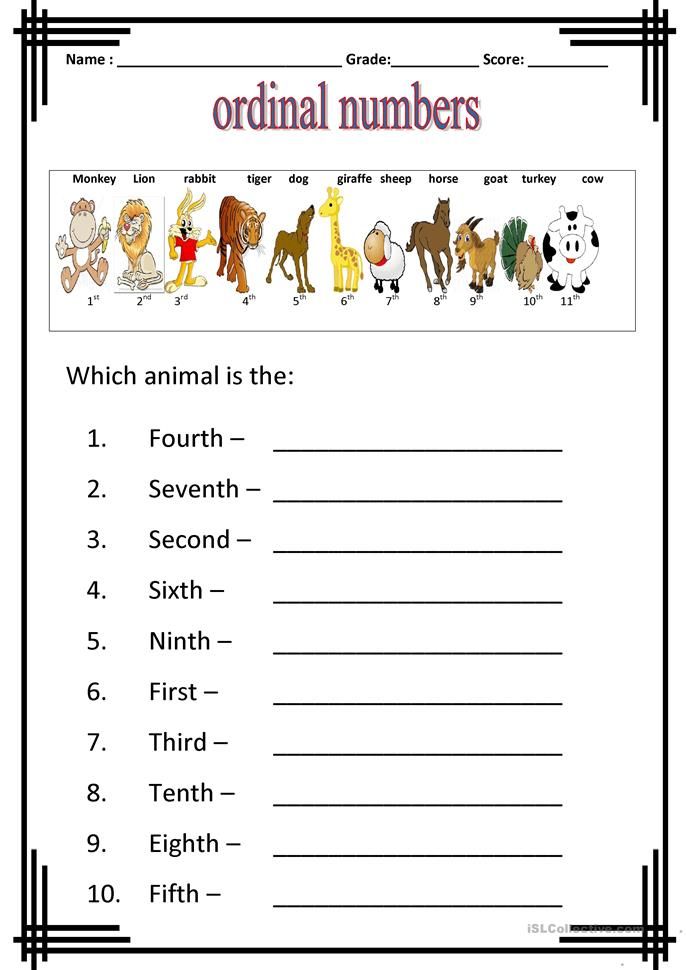 By the way, by inviting your child to imagine the sheets in the form of funny clouds, you will push him to dream up a little.
By the way, by inviting your child to imagine the sheets in the form of funny clouds, you will push him to dream up a little.
So what needs to be done. Lay out the sheets-clouds in a row. Place the toy on any of them. Start asking questions:
How many clouds do we count?
Are all clouds the same?
Can you show me where the toy sits?
How can we find out which cloud she is riding?
Answering the questions, the child will count the clouds, he will be able to find out for himself that the toy is sitting on the first, second or third. You can play this game for a long time. The toy will soon get bored on its own cloud, it will want to transfer to another one, and then to the next one, and so on. As you play, keep asking your child probing questions.
Number and Ordinal Counting Game - Rainbow Arc
You will need multi-colored identical objects. Ideally 5-7 colors. It can be anything - from building blocks and cubes to carved figures from cardboard, balls, plastic plates, etc.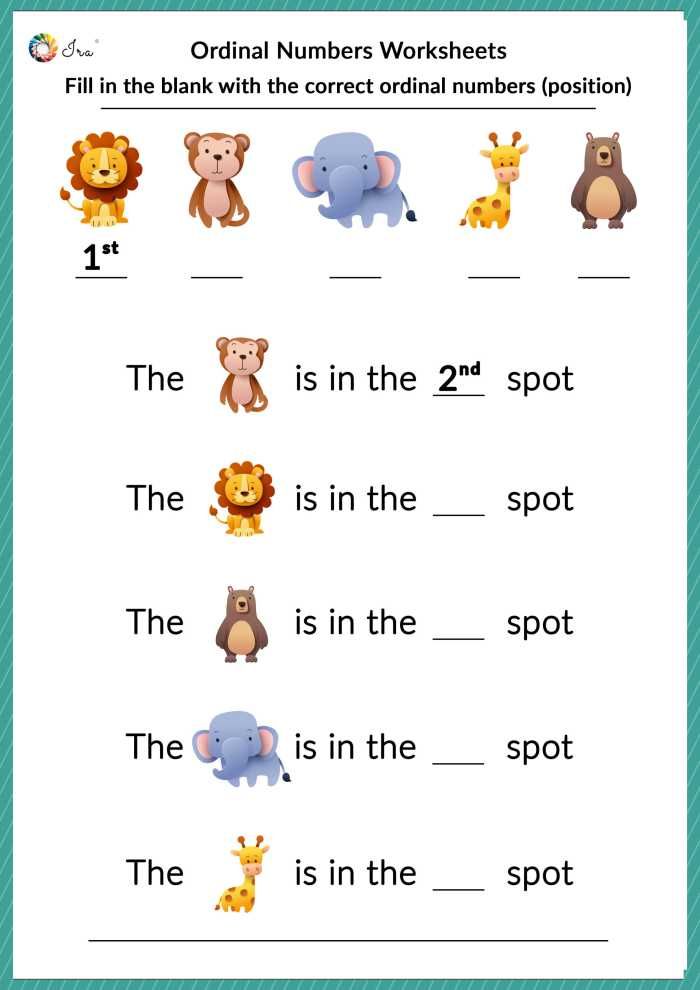
To reinforce quantitative counting, simply ask your child to count objects. Complicate the tasks by grouping them by color or some specific features.
When practicing ordinal counting, invite your child to name the number of an object by color and vice versa. For example:
What color is the third ball in a row?
What is the blue cube on the right?
Show me the second clothespin from the left, what color is it?
Change objects, direction of counting, number before the child begins to lose interest in what is happening.
Game - Luntik's birthday
If the child does not know or does not like Luntik, you can replace him with any other cartoon character. So how to play.
Together with your child or on your own, you need to cut out 5 identical balloons on a stick from cardboard. Under one draw a birthday cake. The purpose of the game is to fix in the mind of the child the idea that the serial number always points to a specific object and depends on the direction of the count.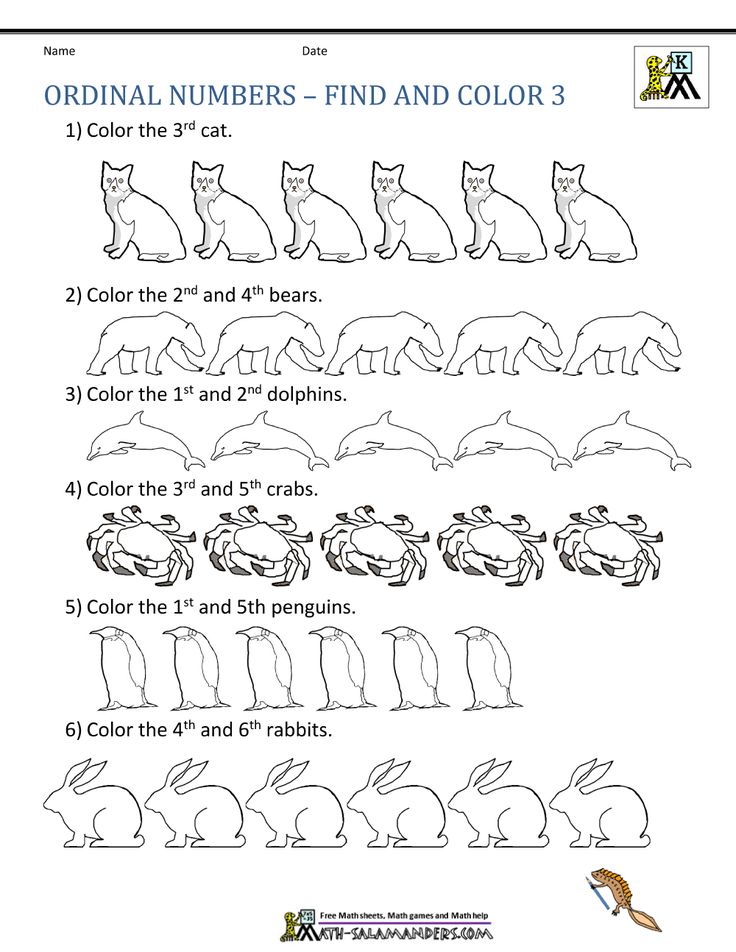
The essence of the story is as follows. Luntik has a birthday. All the guests decided to give him a balloon. But someone could not resist and prepared a birthday cake for the birthday boy. Luntik knows that a surprise awaits him. The caterpillars told him about this in secret. But apart from the fact that the guest who brings the second ball will have a surprise, he does not know anything!
Task: Find the second ball and make sure that Luntik gets a cake with it. To begin with, try to do it for the birthday man. For visibility, let him begin to count from the wrong end, skip the balls or swap them. The main thing is to clearly show the baby that the direction of the account affects the final result.
Variations of the game are different. You can swap balls, pick up, add, etc. Each time the child must determine what has changed, why, what has become the serial number of the balloon with a birthday cake.
Helpful Hints
To get kids under 4 interested in counting in the summer, tell them that it will help them find out the total number of items and find a place for each.